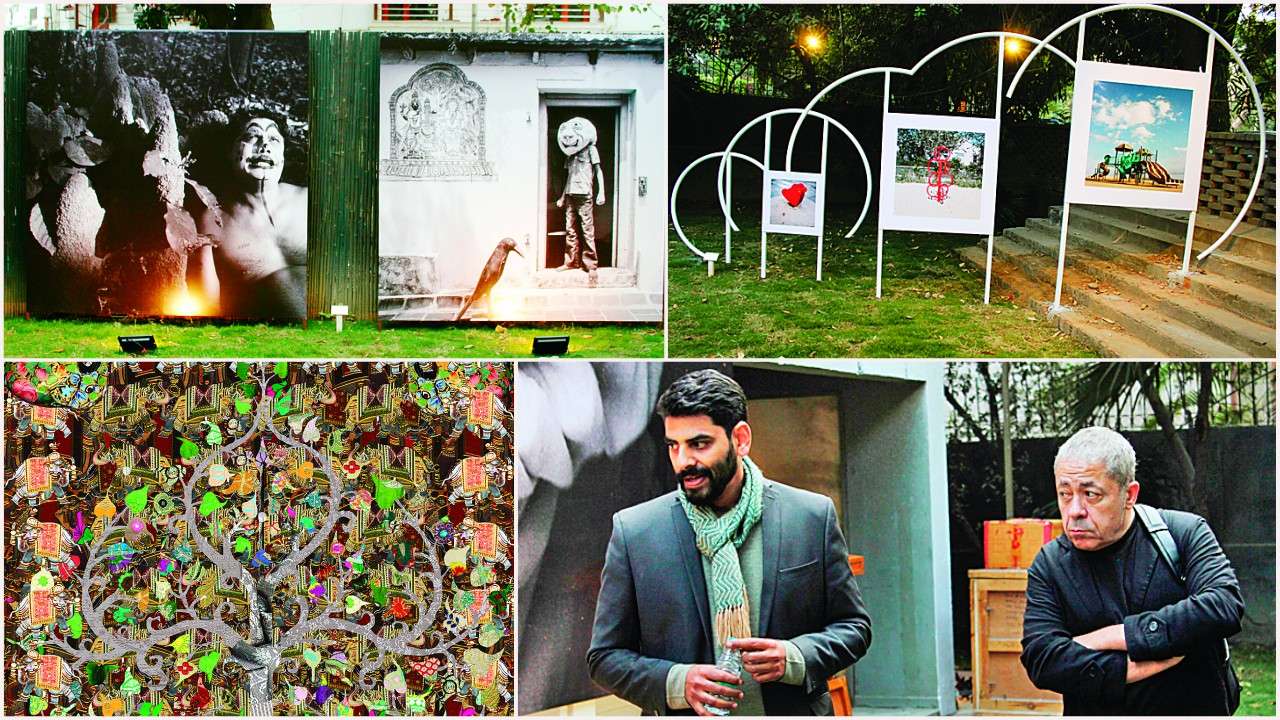
V Nageshkar was the first Indian artist to travel to France to study art. He spent five years (1930-35) at École Nationale Supérieure des Beaux-Arts, France's premier art school. How this obscure artist, who was born and brought up in Kolhapur, ended up in Paris is not known, but a few of his paintings that survive show a distinct touch of Gauguin. Undoubtedly, it would have been the influence of the intense churn in art-making practices underway in Paris at the time, with several movements such as Post-Impressionism, Expressionism, Fauvism, Dadaism and Cubism jostling for attention.
In later decades, several Indians who wanted to be a part of the excitement made their way to Paris to study at the École des Beaux-Arts, including sculptor Chintamoni Kar and painters Sailoz Mukherjee, Nirode Mazumdar, Jehangir Sabavala, KK Hebbar, Ram Kumar, Paritosh Sen, SH Raza, Akbar Padamsee, Laxman Pai, Krishna Reddy, down to Nalini Malani in the 1970s.
This 'French connection' was the subject of a large show mounted by Delhi Art Gallery to coincide with India Art Fair. From several large paintings and a few sculptures by these France-educated artists, it was clear to see the influence of the Western modernist movements, and how they – Raza, Pai and Ram Kumar, especially – attempted to assimilate it with their Indian identity and painting traditions.
Many like legendary print-maker Krishna Reddy, stayed on, gaining acclaim the world over for his discovery of 'viscosity printing', though he remained relatively obscure back in India. Others like Sakti Burman and Raza, drawing from art traditions of India as well as France, kept a foot in both countries.
Ironically, however, it remained a one way street – French artists, for all intents and purposes, remained ignorant of Indian art. With the worthy exception of the famous sculptor Auguste Rodin, who was so enamoured of the Nataraja statue that he described it as the "perfect expression of rhythmic movement". At a seminar held on the sidelines of the exhibition, Catherine Chevillot, who heads the Rodin Museum in Paris that houses the artist's 6,000-strong collection of artifacts and antiquities from around the world, spoke of Rodin's fascination with classical Indian forms.
The Indo-French cultural engagement, however, has petered off in recent decades – France no longer has the primacy in the world of arts that it once had. What happens now are more like encounters, one of which was 'Mutations', a photography show commissioned as part of the France-India cultural festival, Bonjour India. Twenty-two Indian and French artists participated in this show housed at 24, Jor Bagh, a picturesque two-storied private bungalow and occasional contemporary arts space.
The fruits of this contemporary encounter, especially the works created by some French artists who'd spent time in India, reveal an interesting reversal in interest. Charles Fréger, who is known for his photographs of people in uniform, showed his School Chalo series that captures children in uniforms on their way to school.
Baptiste Rabichon showed computer-altered images of things he'd brought back from India – a feather, a stone, leaves – put together with motifs from traditional wall paintings. The effect was like that of a jewelled tapestry, all rich tones and intricate patterns, something you could have seen in Rajasthan, West Asia or medieval Europe.
Philippe Pétremant's morphed bank notes – faces, colours, motifs blended in a deliberate mix-up of political and historical registers – were, clearly, referring to demonetisation.
But the most interesting was Yannick Cormier's images of the actors of Manalmagudi Theatre Land, a contemporary theatre group from Kovilpatti, a small town in Tamil Nadu, known for their visually breathtaking productions.
Cormier has followed the group for two years now and his images are a subjective documentary that is not only beautiful, but also shows empathy for the actors and the forested landscape they work in. Several of his black and white images, blown up to gigantic proportions, were draped over the building – a glimpse of and an invitation to France's enduring fascination with India.